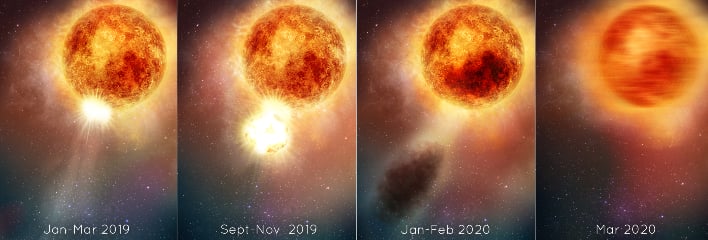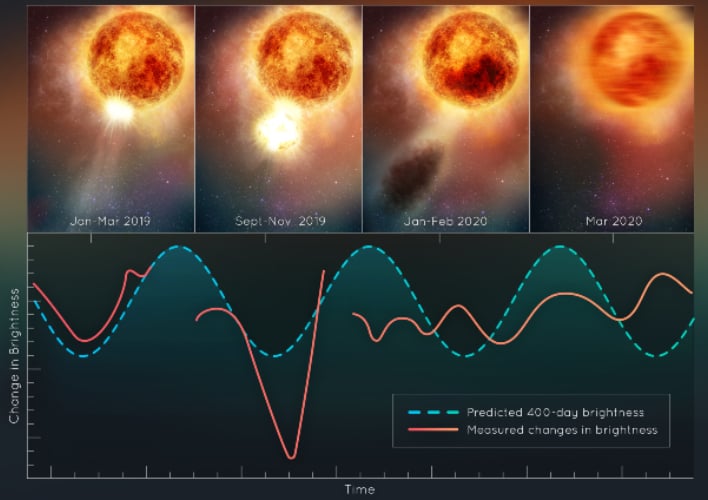NASA’s Hubble Spots Supergiant Star Betelgeuse Erupting In A Violent Historic Explosion
To put just how massive this explosion was into perspective, our own Sun regularly blasts off parts of its tenuous outer atmosphere, the corona. This dynamic event is known as a Coronal Mass Ejection (CME). However, Betelgeuse's SME emitted 400 billion times as much mass as a typical CME we see from our Sun.

While the bad-tempered behavior of Betelgeuse is surprising to astronomers, it is not necessarily indicative that the star is about to blow up anytime in the near future. Astronomers are, however, using these latest observations as clues to how red stars lose mass late in their lives as their "nuclear fusion furnaces burn out."
Dupree is in fact working to pull together all those clues of the star's moody behavior before, after, and during the eruption in order to piece together a coherent story like no other of an aging star.
"We've never before seen a huge mass ejection of the surface of a star. We are left with something going on that we don't completely understand," Dupree explained. "It's a totally new phenomenon that we can observe directly and resolve surface details with Hubble. We're watching stellar evolution in real time."

Researchers believe that the massive outburst in 2019 may have been caused by a convective plume, which was more than a million miles across, bubbling up from deep within the star, according to NASA. In turn, it produced shocks and pulsations that emitted the chunk of photosphere. The blast left the star with a large cool surface area under the dust cloud that was created by the cooling piece of photosphere.
Surprisingly, the supergiant star's 400-day pulsation rate is now gone. For nearly 200 years astronomers have measured this rhythm, and its current absence is evidence of how ravenous the explosion actually was. Dupree theorizes that Betelgeuse's interior convection cells, which produce the regular pulsation "may be sloshing around like an imbalanced washing machine tub."
While there were several different instruments used in the study, Dupree says Hubble was pivotal in detecting what actually occurred with Betelgeuse. NASA is also hopeful that the James Webb Space Telescope (JWST) can be utilized to detect the ejected material in infrared light as it continues its journey away from the star.
Top Image Credit: NASA

